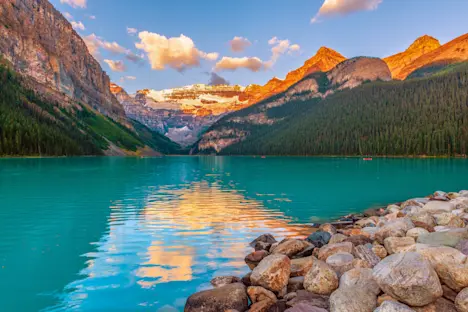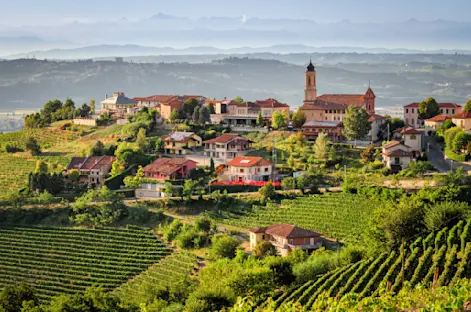Every year on the first day of summer, Iceland’s Horticultural School—part of the country’s agricultural university in Hveragerði—opens its doors to the public. Visitors pour into this education and research facility to see exotic tropical plants thriving, including bananas. About a ton of these fruits, which typically prefer hot climates, are cultivated here each year. In fact, Iceland is as close to the Arctic Circle as bananas grow, thanks to the university’s greenhouse.
Although the bananas are produced only for students, teachers, and guests to enjoy, the world’s northernmost banana plantation is a prime example of how Iceland’s greenhouses have revolutionized the country’s agricultural industry.
Growing in the Cold
In a place known for glaciers, lava fields, short summers, and cold weather, the fact that Iceland can produce a wide variety of crops is impressive. This is largely thanks to greenhouse horticulture. Iceland’s produce is fresh and flavorful, qualities it owes to clean air, pure spring water, and volcanic soils—a wealth of renewable natural resources.
The consistently cool weather keeps bugs and insects away, eliminating the need for pesticides and other chemicals. The island’s small size—about the same as Kentucky—is also an advantage, allowing vegetables to be harvested and sold at markets within hours.
By controlling environmental factors such as temperature, sunlight, water, and nutrients, Iceland’s agricultural greenhouses are remarkably sustainable. They help produce nearly half of all vegetables consumed in the country and have become a popular stop for visitors. Greenhouses are one of the many factors that make “the Land of Ice and Fire”—which you can experience on Nat Hab’s Iceland: Circling the Land of Fire & Ice adventure—so distinctive. Their history is equally fascinating.

The History of Iceland’s Greenhouses
Farmers in Iceland have been harnessing geothermal heat for agriculture for centuries. The technique began out of necessity—to supply food in a place where weather can be volatile and landscapes unforgiving. Early farmers planted hardy crops such as potatoes and grains on land warmed by geothermal steam, which extended the growing season slightly.
Iceland’s first greenhouse was built in 1924, when farmers discovered they could use geothermal water to heat enclosed spaces and sterilize soil against pests and disease. These early greenhouses extended the growing season year-round. Over time, structures evolved from natural materials to plastic, and today most are covered with glass to allow in maximum light.
How Have Greenhouses Transformed Iceland’s Food System?
In the century since Iceland began using greenhouses, crops previously unknown to the local landscape have flourished. Greenhouses have increased annual yields, improved food security, and strengthened the national economy.
They rely on renewable energy sources such as hydropower—derived from meltwater rivers flowing off Iceland’s glaciers—and geothermal energy from the Earth’s heat. Both regulate light and temperature to maintain optimal growing conditions. Some also use supplemental carbon dioxide, a byproduct of geothermal power, to enhance plant growth.
Today, more than 45 acres of greenhouse space are cultivated across Iceland. While the country still imports most of its produce, local greenhouse crops promote sustainability, reduce reliance on fossil fuels, and cut greenhouse gas emissions—all while providing consumers with nutrient-rich, locally grown foods.
What Grows in Iceland’s Greenhouses?
Icelandic farmers primarily grow cucumbers, strawberries, lettuce, red and green peppers, mushrooms, and herbs. Hardier vegetables such as carrots, potatoes, cauliflower, and kale can be grown outdoors in naturally warmed, geothermally heated soil.
Cut flowers, potted plants, and microgreens also thrive—thanks in part to technological advances such as hydroponics, which grows plants in nutrient-rich water instead of soil, and vertical farming, which stacks crops in multiple layers to maximize space.

Experiencing Iceland’s Greenhouses and Locally Grown Produce
Most of Iceland’s greenhouses are located in the south, particularly in the town of Hveragerði, the country’s “greenhouse capital.” Here, visitors can tour Friðheimar, a family-run farm specializing in greenhouse-grown tomatoes. Pre-booked tours are available year-round and include an exhibit on geothermal heating and gourmet souvenirs such as jars of cucumber salsa and tomato jam.
Friðheimar’s on-site restaurant serves bowls of house-made tomato soup with fresh herbs and sour cream, Icelandic mozzarella burrata with heirloom tomatoes and basil olive oil, and even tomato beer. It’s open every afternoon, daily.

Nat Hab travelers also experience Iceland’s farm-to-table cuisine firsthand at stops such as the South Coast’s Drangar Restaurant, where dishes include a starter salad with baked tomatoes and cashew cream or coffee-cured salmon with cucumber.
In north Iceland, Fosshotel Mývatn Restaurant features Nordic cuisine using local ingredients from area farmers and fishers. Menu highlights include roasted tomato soup made from greenhouse-grown fruit in Hveravellir and Arctic char with pickled red cabbage and potatoes. Finish with a skyr posset, a thick, creamy yogurt dessert topped with citrus fruits and blueberries.
One of the best ways to support Iceland’s greenhouse industry is to buy locally grown produce while visiting. In markets, look for the word íslenskt on packaging—it means Icelandic in origin and guarantees freshness.
From the geothermal greenhouses of Hveragerði to the farm-to-table kitchens of Reykjavik and beyond, Iceland’s innovation in sustainable agriculture offers a fascinating glimpse into how nature and science thrive together in the North. Join Nat Hab to experience these living ecosystems firsthand—alongside glaciers, waterfalls, volcanic landscapes and wild coastlines that define the Land of Fire and Ice.
































